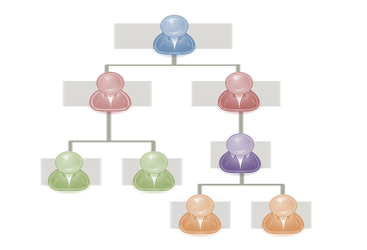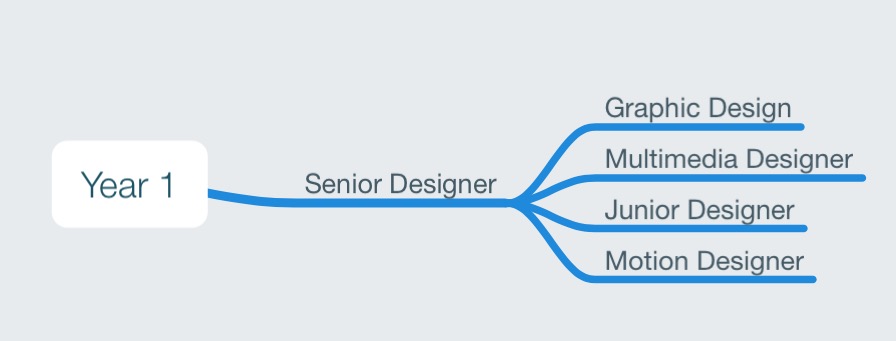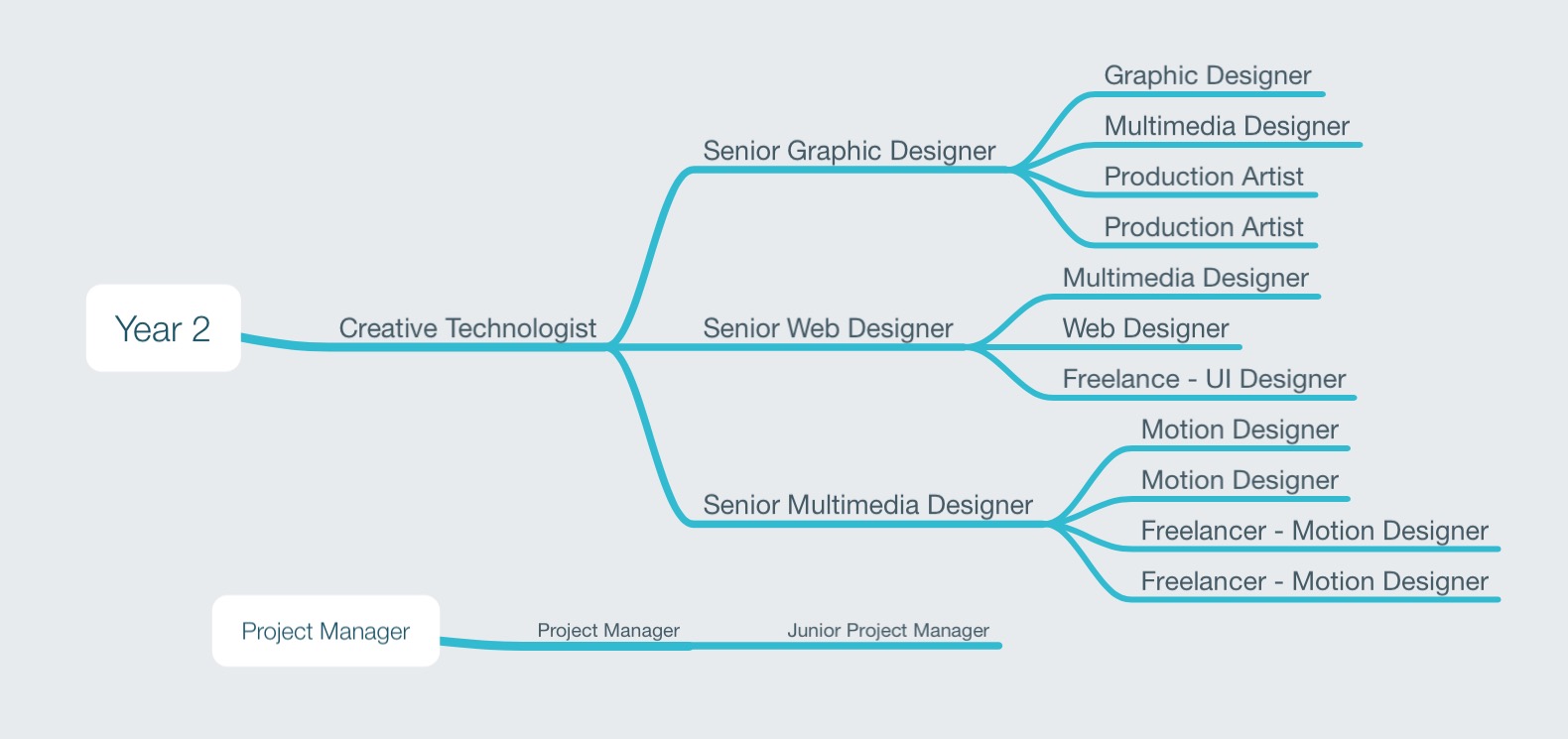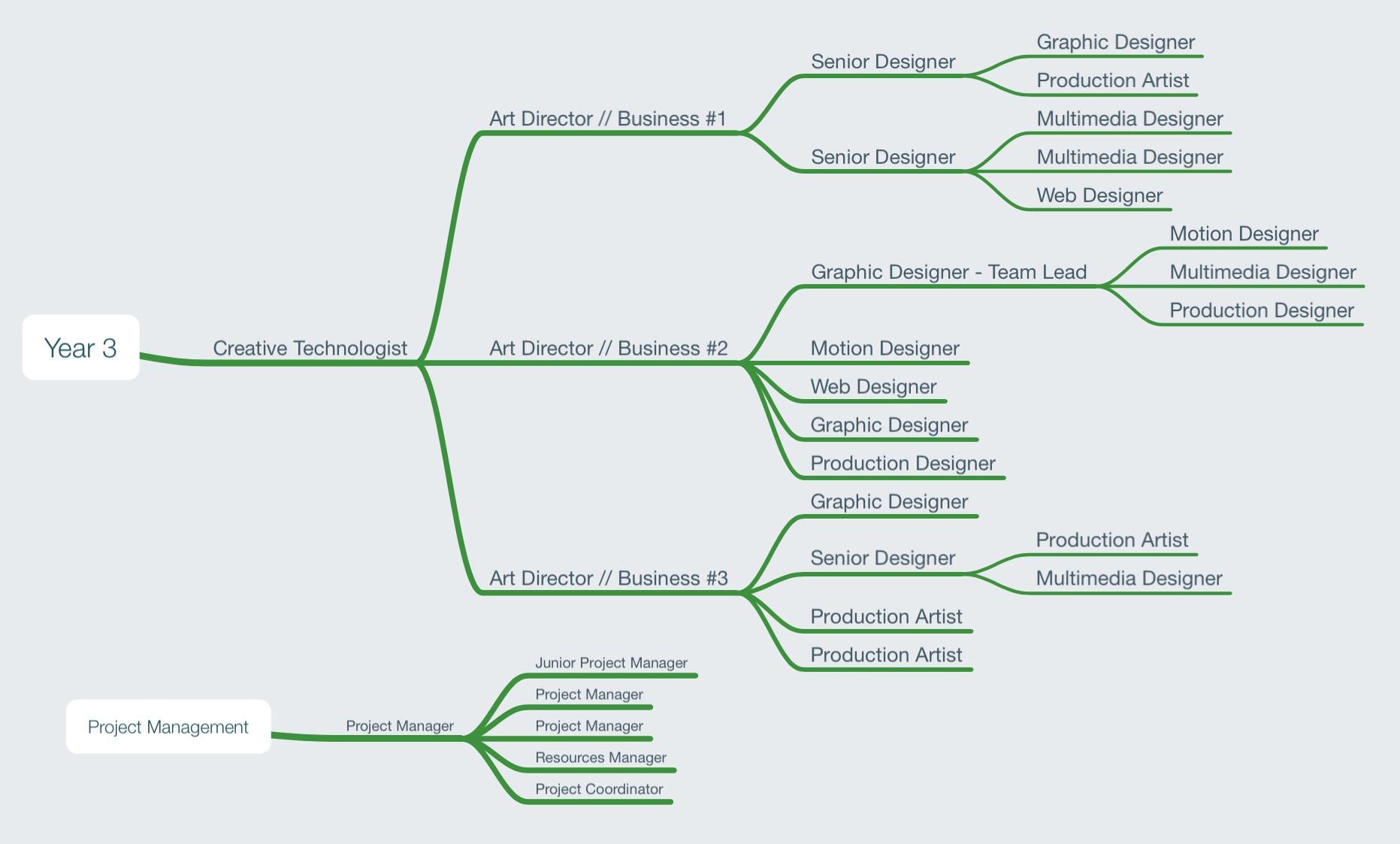Three Years, Three Org Charts

You’ve hit the brink. The elevator pitches you’ve been doing to promote your in-house team have worked. Work is flooding in as every part of the organization wants your help keeping costs down while delivering stronger, more strategic creative. It’s time to add headcount to handle the increased workload.
You wonder what positions would benefit you and your team: another designer, a writer, or perhaps a project manager?
Over the past three years, the team at Cineplex Entertainment has found ourselves evolving our org chart annually to accommodate project growth as well as the variety of work we’re asked to produce. Let’s take a look at each model, and then dive into what’s important to consider when embarking on this degree of change.



So let’s get started on how to tackle this type of growth within your own team.
START WITH AN AUDIT.
To help you and your team figure out how to navigate from one org chart to the next, start by doing an audit of your current work scenario.
Where is the work coming from? Take a step back and audit your project management systems and teams to find out who is requesting the most work. You can do this a few different ways: check your request forms/briefs to see who your project sponsors are, or even check out your creative team’s timesheets. Once you have a clear idea of where most of your work is coming from, you can start to see if the people you have assigned to work with that group or client are enough to support it.
Do skillsets match the output? Look beyond typical roles like graphic designers, web designers and copywriters. Do you have employees with niche roles and knowledge, or people who have flexible or generalist skillsets? Taking the time to properly analyze your team’s competencies will pay off in the end. Another thing to check are deliverable lists on current projects to see if you have an increase in one type of work versus another (e.g. building social media assets and web banners vs. print signage). Doing so will help you determine if you need to move people based on skills or if you need to add (or build a case to add) freelance help.
Look at the scope and frequency of strategic work. If your team is like most, you support a wide range of projects. I highly recommend that you tier or segment their work to define what’s in scope. For example, you may have projects that are straight-up production or some that involve development of a new brand from the ground up; the work involved in these two types of projects is vastly different. Take a look at the growth patterns by type of work. You may find that while your total project count is similar year over year, your intake of strategic work has grown, requiring more creative time and energy to fully explore—and likely, more headcount!
PUT THE RIGHT PEOPLE IN THE RIGHT PLACES.
Now that you have your checks and metrics on the current workload, pull up your current org chart. For most, the minute you try to align your staff by business unit or client, you almost immediately see areas of opportunity. A couple questions to ask yourself as you prepare to shift people or add to your org chart:
1) Do the people you have on your team have untapped skills that you learned about in the interview process that would be good opportunities for their growth and development, instead of hiring more people?
2) Is anyone on your team ready to take on a new leadership position? This is a great opportunity to provide aspiring employees with added responsibility—maybe a senior designer can have a junior designer report to them, as you add people to the team.
REDISTRIBUTE WORK ACROSS THE TEAM.
Lastly, consider segmenting your employees based on what makes the most sense for the team. There are a few different ways to go about this, as illustrated in the examples above.
Organize by skillset. It’s common to see teams put all their designers together, all their web people together, all their motion designers together, etc. This has the benefit of allowing a senior designer to lead the others. However, it does not allow your teams to move work around easily. If your web-design team is swamped, unless other designers have those skillsets, they can’t easily assist—leaving you to find freelance help.
Organize by business/client. Organizing multi-disciplinary teams around a client or client roster allows a mix of people to work on the business at the same time. If one team has less work, they can easily assist other teams in a flexible way. Plus, you gain brand knowledge and consistency with creative staff working on the same brands/products more frequently.
Organize by project tier. Some in-house agencies choose to organize by having a few lead creative teams that come up with the high-level concept work and others that comprise the production team. This model works great if you pair typical art director/copywriter duos as team leads.
Now it’s your turn. Let us know how you’ve segmented your team by using the comments section below. And don’t hesitate to reach out if you have any questions or would like to connect on ideas—I’m just a tweet away, @vinyldust.
- advertising,
- agency,
- association,
- audit,
- brand,
- cineplex,
- client,
- CMO,
- content,
- corporate,
- creative,
- digital,
- IHAF,
- in-house,
- insource,
- internal,
- leadership,
- lucas,
- management,
- marketing,
- media,
- membership,
- metrics,
- networking,
- organization,
- production,
- professional,
- project,
- skill,
- social,
- strategy,
- timesheets,
- trends
Recent Posts

In-House Data: Fact or Fiction?
October 16, 2023
I’m going to be honest with you, which I always am but this time it’s scary honesty. There are a lot of in-house agency research reports out there. And not all of them contain data that are close to the integrity of the studies IHAF publishes—the next of which drops at the IHAF conference on …

IHAF Wrapped
December 20, 2023
One of our favorite things to do at year-end is look back at the events, presentations, and online resources our members tapped most. (Why should Spotify have all the fun?) Here are a few of your favorites in 2023:
• New Assortment of Org Charts Download • Updated Job Profiles …



















%20(1).pdf%20-%20Copy.jpg)

%20(1).png)


No Reader Comments